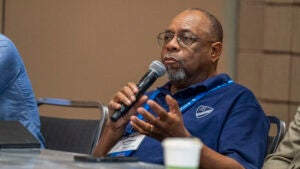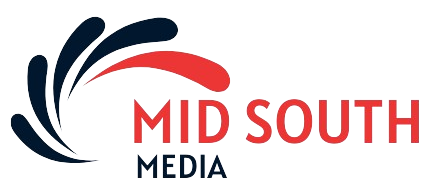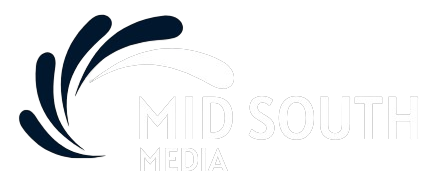
07.24.2023 | In Coastal Restoration
A Q & A with Amanda Moore, Director of NWF’s Gulf Program and Coordinator of the MRGO Must Go Coalition
Below, Amanda discusses takeaways from the panel “What’s Next for MRGO? Exploring the Path Forward with Federal Funding for Restoration” at the State of the Coast Conference. Other panel participants were Arthur Johnson from the Lower 9th Ward Center for Sustainable Engagement and Development; Guy McInnis, St. Bernard Parish President; Austin Feldbaum, Hazard Mitigation Administrator for the City of New Orleans; Kent Bollfrass of CPRA and Michelle Boudreaux Meyers from the U.S. Army Corps of Engineers.
Q: Can you give us a brief overview of how the MRGO came to be?
Amanda: The MRGO was a federal deep draft navigation channel, dug for the purpose of being a shortcut from the Gulf of Mexico to the Port of New Orleans. In the 50’s, when it was proposed, there was a lot of controversy. At the time, it was the largest civil works project in U.S. history, and more dirt was moved to dig the channel than the Panama Canal. It was an enormous undertaking, and the local community, especially those who used the resources and worked the waters and lands in the area, knew it would change everything. Eventually, the channel was dug and finished in 60’s, and it did change everything. It changed the entire environment negatively but also ended up being underused and was extremely steep to maintain. It was an economic burden and not an economic boom.
Q: How has the channel impacted surrounding wetlands and communities?
Amanda: Because it’s a deep draft channel, it allowed a surge of saltwater into the area where it was dug. Those wetlands between the Gulf and the Port of New Orleans on the MRGO path were mainly freshwater wetlands and cypress forest. The channel inundated the area with saltwater, changed the composition and degraded tens of thousands of acres of wetlands. We’ve learned since its closure that it impacted over 1 million acres of coastal habitat in the greater New Orleans area. Besides channeling saltwater, the channel itself also eroded from 650 to 3000 feet wide in some places. MRGO is also tied to the catastrophic damage that occurred during Hurricane Katrina and levee breaks occurred all along the channel. Some of the deadliest flooding happened in adjacent communities, and places like the Lower Ninth Ward and Chalmette are still working to recover from Katrina’s impacts.
Q: When, how and why was the MRGO closed?
Amanda: After Katrina. Unfortunately, it took one of worst disasters in U.S. history to get the channel closed. Before Katrina, it was dubbed a hurricane highway, so everyone knew that this thing was a mess. When Katrina happened, there was a lot of awareness that the MRGO was linked to what happened in adjacent communities. With the Water Resources Development Act (WRDA) of 2007, Congress finally acted and said to close the channel and come up with a plan to restore the impacted ecosystem. The channel was closed with a rock dam across Bayou La Loutre in 2009. The second closure is the Surge Barrier at the convergence of the MRGO and Intracoastal Waterway in the Golden Triangle, in an area where a lot of surge water funneled up during the storm.
Q: What did the passage of WRDA in 2022 mean for the MRGO?
Amanda: After WRDA 2007, the channel was closed with a rock dam in 2009 and the Corps wrote a plan for ecosystem restoration. The Corps did that with an unprecedented amount of community input, and the multi-billion-dollar plan was completed in 2012. That was the end of the story for a decade, because there was a discrepancy over cost share – who paid for the restoration. However, in WRDA 2022, Congress clarified responsibility for funding to be 100% federal. That’s why we had this panel at SOC, because we know people are still interested in what’s happening, 18 years later.
Q: How will ecosystem restoration happen, and how will communities be involved?
Amanda: At State of the Coast, we brought together key stakeholders to see what they were thinking as we move forward with ecosystem restoration, since we now have cost share clarification. Something that stood out to me as we heard from representatives from the City of New Orleans, St. Bernard Parish and the Lower 9th Ward was that the center of their priorities seems to be community engagement, making sure there are jobs created and that there’s recreational access for folks. That’s something that CPRA and the Corps need to understand, and this talk was a nice introduction for them to start that dialogue.
Q: What projects will contribute to this ecosystem restoration?
Amanda: There’s been quite a bit done with other funding sources over the years. Louisiana has done a good job prioritizing that, even as MRGO-specific funding was stalled. MRGO impacted so much that there’s still a lot left to be done, but there’s some really key projects moving forward with different funding sources. For MRGO work, some of the first projects they’ll focus on will be shoreline work along Lake Borgne, which will protect the land that’s there against further erosion. There’s lots of work to be done in the Central Wetlands, the Lake Borgne Marsh Creation, Golden Triangle, Biloxi Marsh and Proctor Point.
Q: During the State of the Coast panel, there was an emphasis on community engagement and workforce development. Can you elaborate?
Amanda: The City of New Orleans does a good job with this. The workforce is a factor I’ve been bringing up in these discussions for the last few years, and I’m not sure what the pathway is. On the panel, our participants talked about some great programs at community colleges and UNO, which prepare the workforce for coastal projects like the MRGO ecosystem restoration projects. We have entities like the Coastal Technical Assistance Center (CTAC), which tries to pair up local and larger contractors to work on projects. In general, it’s something we have to continue to discuss with all relevant parties. We still have communities reeling from MRGO’s impacts and billions of dollars of work happening adjacent to their communities. We need to be really intentional with the way we connect recovering communities with the restoration economy that’s going to be booming all around them.


